When choosing a grape variety, preference is given to varieties with high resistance to adverse weather conditions and diseases. Among the hybrids bred by breeders from different countries there are many options that deserve special attention. One of them is the Timur grape, the description and characteristics of which are presented below.
Table of contents
Description of the grape variety Timur
The early ripe grade enjoys success among summer residents and winegrowers who have grown the crop with whole plantations. The quality of the berries is excellent, as well as the characteristics of the plant. A distinctive feature is the presence of two varieties: white and pink.
White

- growing season - 110-115 days;
- growth rate - average;
- berries oval-shaped, color green with an amber shade;
- young shoots develop rapidly, but at the same time need careful care;
- when grown on soils with a heavy structure the taste is complemented by tartness;
- plant frost resistant (withstands -25 °);
- sugar content - about 17-22%.
Pink
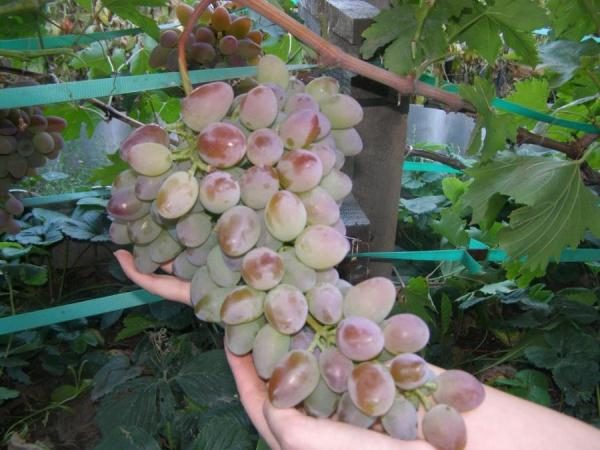
- growing season - 110-130 days;
- berries larger than white fellow, color pink-purple;
- high calorie (about 70 Kcal) due to a higher content of sugar in the pulp (22-25%);
- taste is not pronounced nutmeg notes;
- plant easy takes frost to -25°;
- resistance to fungal diseases is high, but weakness is considered to be low resistance to tick attacks.
Characteristics of berries
Clusters of grapes Timur have a beautiful cylindrical or conical shape, the weight of one on average reaches 400-600 grams. Berries, depending on the variety are white (yellow-green) or pink, mass 6-8 group which credits the variety in the category of large-fruited plants. Elongated grapes in diameter 21 mm, length 29. The indicators are averaged, there are also real giants: length 34 mm, diameter 26 mm, weight over 10 grams.
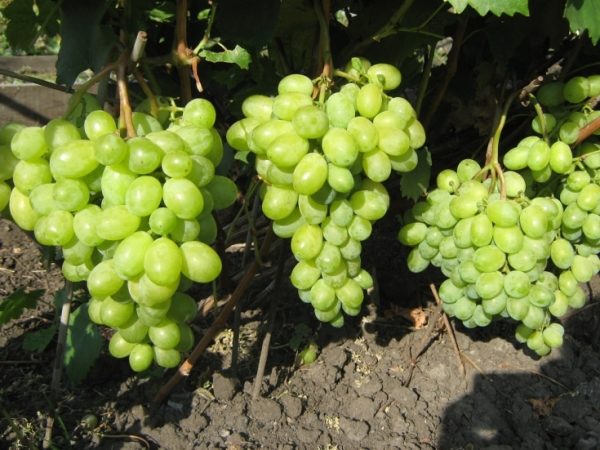
Although the skin is dense, it does not create discomfort when eating berries, the flesh is sweet and juicy with a well-felt nutmeg taste.
In many ways, the white type of hybrid is similar to pink grapes, however there are some differences:
- the clusters are friable, the average weight is 700-800 grams;
- the skin is a little denser, more felt when eating berries;
- pink-purple fruits are larger than the white relative (length of the berry is 35 mm, diameter is 23 mm, weight is 9-11 grams).
Advantages and disadvantages
Winegrowers who are only considering a variety for planting are advised to familiarize themselves with its advantages and disadvantages.
Benefits of grapes:
- early ripening period;
- onset of fruiting 2 years after the landing of the Chubuk;
- strong immunity and frost resistance make it possible to grow berries almost all over Russia;
- compact plant, the big space which is not occupying on a site;
- fruit large sizes and very sweet to the taste;
- formed conical clusters give culture aesthetic value;
- resistance of the variety to mildew.
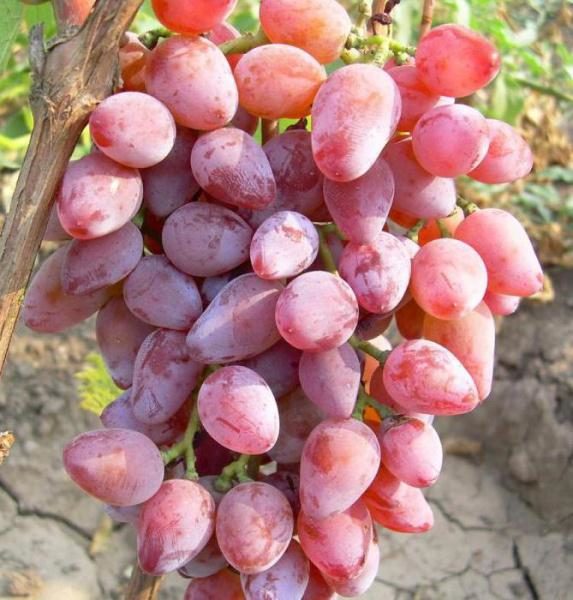
It is important to note the high commercial quality of berries, good transportability. These criteria must meet the variety grown for sale.
Timur’s drawbacks regarding the quality of the berries and agricultural technology are absent, however, it is worth considering that growth on wet soils or abundant watering adversely affect the taste, it becomes less expressive,watery. The skin of pink grapes is slightly denser than white, more felt in the mouth when consumed.
Landing
For planting, seedlings with a formed root system are selected. The diameter of the cutting must be at least 7 mm Too long roots should be shortened to 15-20 cm.
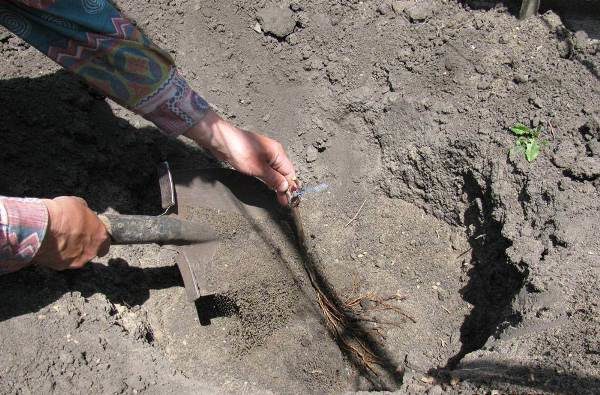
When choosing a place, preference should be given to a plot on a hill with loose soil on the sunny side. You should not choose tall plants as neighbors, they will create shade, preventing the ripening of berries. When planting at a building or fence, you need to indent at least 1.2-1.5 m.
Variety Timur differs simplicity to the type of soil, but it is better to create the most favorable conditions for the growing season of grapes. If the land is dense, it should be diluted with large river sand and a small amount of peat.
Planting of seedlings can be planned both in the spring (March) and autumn (October). Preliminary soil needs to be enriched with organic fertilizers.For these purposes, ideal: compost, humus. You can also use the mineral complex, which includes phosphorus and potassium. The growth of crops on fertile land provides good yields and high marketable qualities of the berries.
The day before planting the seedling is placed in a container with a small amount of water. Immediately before immersion, a root is dipped into a clay mash. The minimum parameters of the pit should not be less 80x80x80 cm. Half a pit of compost (humus) and the same fertile soil is poured at the bottom of the depression, after which a cutting line is installed strictly vertically. Planted chubuk need to generously pour water.
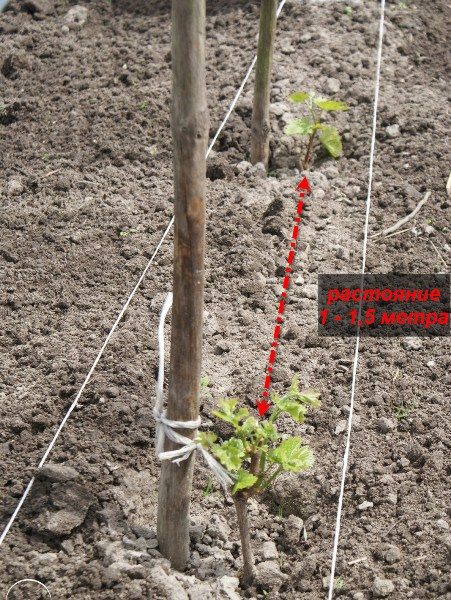
Care for a young and mature vine
Caring for Timur grapes is not difficult to name, however, you must perform certain activities strictly according to the schedule, especially at the developmental stage of the cutting.
Important for the plant stages in which watering is simply necessary, are:
- period before flowering bushes;
- after fruiting.
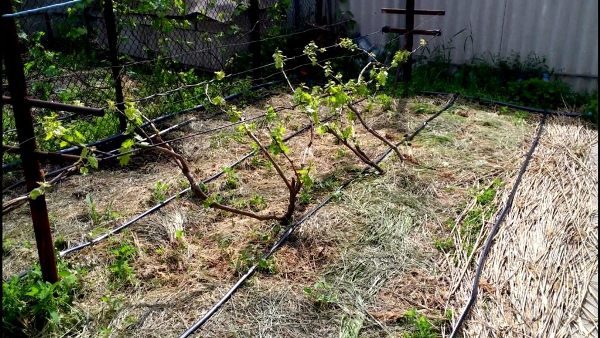
No additional irrigation work can not do in dry weather. It is important when carrying out irrigation to observe the measure, the abundance of moisture provokes the dropping of flowers and cracking berries. To keep the soil moist longer, it is recommended to cover it after irrigation with mulch. For this purpose, suitable: peat, sawdust, moss. The flooring layer must be at least 3 cm.
Virtually all tall cultures need pruning. This procedure promotes better development of the shoot and abundant fruiting. Grape Timur is no exception.
Pruning is carried out in the autumn, leaving on each bush 30 ocelli. To obtain clusters of giants, the number of eyes is reduced to 20-25. To prevent overloading of the vine, it is recommended to leave no more than 10-12 eyes.
Intensive growth requires regular fertilizing. To enrich the soil with nutrients using organic and mineral complexes.However, you should not overdo it with nitrogen fertilizers, their overabundance worsens the taste of berries.
The grade Timur differs in frost resistance, but it is impossible to predict weather whims. therefore in the middle lane spend wrapping bushes. As a covering material using canvas, polyethylene, agrofibre.
Breeding methods
For reproduction of grapes used vegetative methods:
- using cuttings;
- layering;
- vaccinations.
From seeds, sprouts are not germinated, as the quality of berries is significantly deteriorating.
Cuttings

Cuttings harvested more often in the fall. After soaking and processing the cut, they are stored in a cool place or in a pit of sand, wrapped in a damp cloth. Wherein to prevent the drying of the cloth can not be as well as lowering the temperature below zero.
Layering
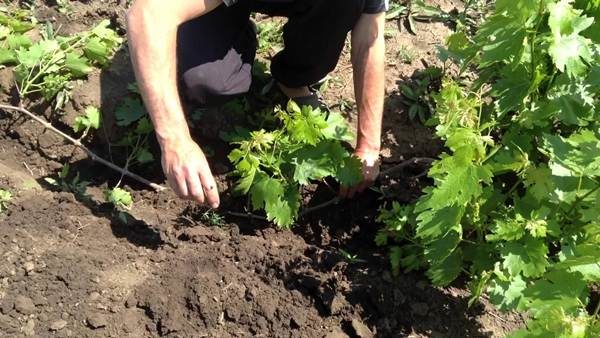
Reproduction by layering provides powder fertile branches with a layer of soil for rooting. After the formation of an individual root system, a shoot is transplanted into a spacious place.
Graft
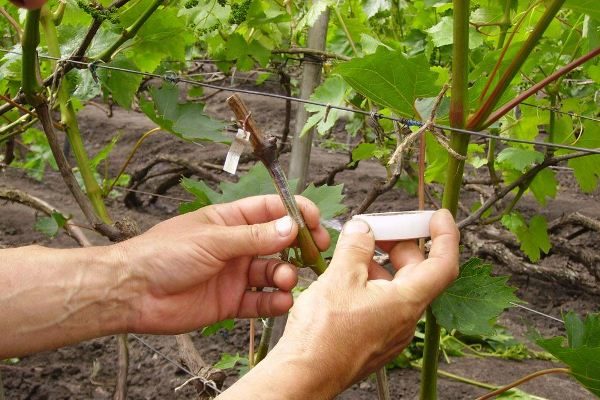
Graft performed using cut cuttings on grapes of another variety. The rules for performing the procedure do not differ from a similar operation on fruit trees.
Diseases and pests
To protect grapes from fungal diseases, in particular rot, it is necessary to conduct preventive spraying of the vine twice per season. The procedure can be combined with watering. Planned work before the onset of flowering and after its completion.
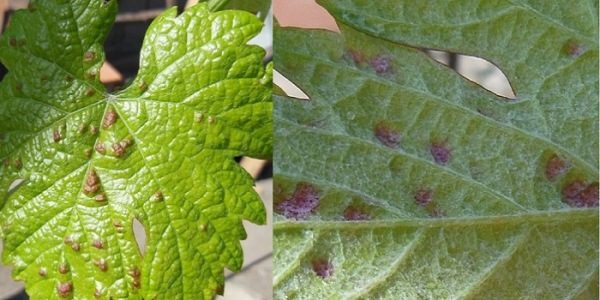
A variety of pink berries is attacked by a felt tick. When the first signs of a pest attack are detected, it is necessary to treat with insecticides: Karbofos, Fufanon, Tiovit-jet and other drugs.
Variety Timur deserves the attention of experienced breeders and beginner growers. Berry will not leave indifferent those who once tasted it, she took only the best qualities from her parents.
